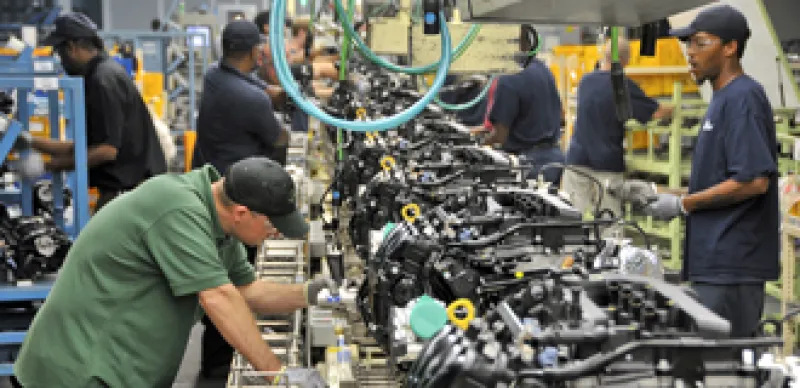You’re undoubtedly familiar with the common refrain that nothing is made in America anymore. This is part of the fashionable lament that the U.S. is in decline. There’s only one thing wrong with this assertion: It’s at odds with the facts.
Yes, we know the stories about the deterioration of the once-mighty manufacturing bases of cities like Buffalo, Cleveland and Flint, Michigan. And yes, we’ve heard all about how an affluent America can’t compete with low-wage nations like China and India. There’s some truth to all that, but it’s hardly the whole truth.
Actually, there’s a lot being made in the U.S. today. America remains the world’s leading manufacturer by far. In fact, if U.S. manufacturing were a national economy, it would be the eighth largest in the world, worth $1.6 trillion a year, according to Bank of America Merrill Lynch. The U.S. contributes 18 percent of global manufacturing output and ranks third, behind Germany and China, as a manufacturing exporter, with an 8.5 percent share.
One reason the myth of waning U.S. manufacturing prowess seems plausible is that the sector has lost jobs, partly because of technological advances. According to a University of Michigan-Flint study, technology has enabled manufacturers to make more with fewer people. In the past 37 years, U.S. manufacturing output in inflation-adjusted dollars more than doubled, while manufacturing employment dropped by more than 26 percent. Overall, about 12.7 million Americans, or 8 percent of the workforce, currently hold manufacturing jobs; 50 years ago 14.6 million people, or 28 percent of workers, were in manufacturing.
Manufacturing isn’t so much dead or dying in the U.S. as it is changing. U.S. manufacturing is moving up the value chain, making more-sophisticated products less subject to foreign competition. In a survival-of-the-most-competitive world, it makes sense to manufacture products where they can be produced at the lowest cost. So inevitably, some low-value-added commodity products like textiles, toys and TVs are now being made in countries where workers earn a fraction of what their American counterparts do.
Today the U.S. specializes in making products that require a high degree of innovation and technological content. Savvy U.S. manufacturers that are widely regarded as possessing the right stuff include A123 Systems in lithium-ion batteries; First Solar in thin-film solar modules; Johnson Controls in office-climate and automotive-electronic systems; Plexus Corp. in outsourced manufacturing of proprietary products in the defense and wireless communications industries; Stryker Corp. in orthopedic products, such as artificial hips and knees; and Varian Semiconductor Equipment Associates in ion implanters used to fabricate semiconductors.
In a novel counter-trend, foreign manufacturers are increasingly making things in the U.S, which accounts for 40 percent of global demand. Foreign manufacturers find it advantageous to establish plants in the U.S. for various reasons, such as gaining marketing opportunities, earning tax credits and — brace yourself — exploiting cost advantages. For instance, a Chinese company in Spartanburg, South Carolina, pays just 4 cents per kilowatt-hour for electricity to power its plants, compared with up to 14 cents in China.
Small companies are what’s big in U.S. manufacturing today. The financial problems and massive job losses of former manufacturing titans like Bethlehem Steel Corp. have been chronicled exhaustively. What hasn’t been reported as widely is that many more young, small manufacturers are flourishing. According to the Cato Institute, for every U.S. manufacturing industry suffering a decline in revenue and profits, two U.S. industries are growing.
Small manufacturers like Bien Hecho, of Brooklyn, New York, tend to have the most successful business models today. Bien Hecho (Spanish for “well made”) makes $3,000 pine-beam tables for offices, restaurants and consumers. Bien Hecho and 200 other small manufacturers, most with fewer than six employees, do business in the old Brooklyn Navy Yard. Demand for work space is so heavy that the Navy Yard is adding 1.5 million square feet, the largest expansion there since World War II.
The state of manufacturing in the U.S. is quite healthy and is likely to remain so for a long time. That’s good for national security, because the U.S. needs a solid manufacturing base in a world that can be a cauldron of shifting political interests. That’s also good for the U.S. economy, as manufacturing produces more economic activity per dollar of production than any other industry; about one in six U.S. private sector jobs depends on it.
Robert Turner is chairman and CIO of Turner Investment Partners in Berwyn, Pennsylvania.






